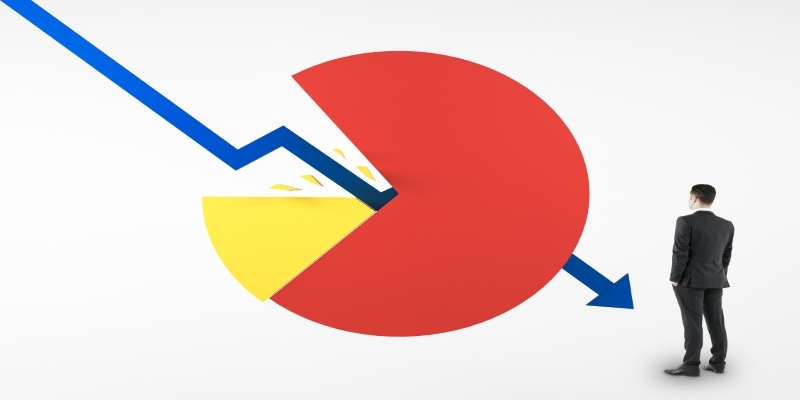Welcome to the complex world of financial terminology, where terms like Insolvency, default, and Bankruptcy often swirl together, creating confusion. In this article, we'll unravel the intricacies of these terms, providing simplified explanations to help you navigate the often-murky waters of financial distress.
Understanding Insolvency: A Closer Look
Facing an inability to repay debt poses a significant challenge. Dealing with Insolvency involves various strategies, such as restructuring debt or adjusting cash flows. Insolvency manifests in two forms: cash-flow Insolvency and balance-sheet Insolvency. The latter occurs when debt surpasses assets, while cash flow insolvency arises when a debtor lacks the means to repay.
The impediment intensifies when the debtor struggles to meet dues, potentially leading to severe consequences. For instance, a homeowner failing to pay mortgage installments may face foreclosure, resulting in default. Insolvency signifies a financial warning, indicating a need for adjustments to avert more severe troubles for businesses or individuals; acknowledging the signs early becomes paramount.
Default: The Crossroads of Financial Obligations
Default happens when a borrower can't stick to the rules of a loan or money agreement. It's similar to not paying your credit card on time or missing mortgage payments. This slip-up can lead to severe outcomes, like a drop in your credit score and extra fees.
Knowing about default is essential for both borrowers and lenders. For borrowers, it's a warning sign of financial problems, and for lenders, it sets off a chain of events, including penalties or legal actions. Spotting the chance of default early gives room for taking action to stop more financial issues from happening. Understanding these basics is like having a roadmap to steer clear of financial potholes.

Bankruptcy: The Last Resort
"Bankruptcy, rooted in 'bancus' and 'ruptus,' Latin for 'bench or table' and 'broken,' is a final recourse when settling debts proves futile. In this scenario, a company admits Insolvency through legal intervention. It comes in two forms: reorganization, restructuring debts, and liquidation, selling assets to meet obligations.
Initiating via debtor's petition or court-issued sequestration order, Bankruptcy signifies a legal recognition that financial challenges demand decisive measures, like reorganization or liquidation, for debt resolution and recovery."
Comparing Insolvency, Default, and Bankruptcy
While these terms share the common thread of financial distress, their severity and implications differ. They are insolvent due to insufficient money to pay their creditors back. Any individual or company that can pay its debts is considered solvent; otherwise, the term "insolvency" would not be applicable. You are referred to as insolvent if you are unable to make payments.
Default signals a breach in financial agreements, typically ushering in more severe consequences. When someone defaults, they've fallen short of fulfilling the terms of a loan or financial arrangement.
It's akin to missing a credit card payment or failing to meet mortgage obligations. The ultimate form of Insolvency is called Bankruptcy. Declaring oneself bankrupt indicates one's incapacity to repay debts. It's simply a term used to describe a person or business ruled bankrupt by a court.
Increasing cash inflows and optimizing the debt structure are two ways to overcome Insolvency. Until one's assets and liabilities surpass their ability to repay debt, they are considered insolvent for a specified time. So, Insolvency is not permanent.
Resolving a default condition requires a strategic and proactive approach to address the underlying financial issues. Resolving a default condition is a gradual process that requires commitment and effort. Open communication, financial planning, and seeking professional guidance are critical to overcoming default and working toward financial stability.
Bankruptcy has no answers. For example, a company that cannot pay its daily expenses due to poor sales and cash inflows can still find a way to remedy the problem.
Experiencing insolvency results in declining credit ratings, creating hurdles for obtaining new credit. Defaulting on financial obligations signals financial instability, causing damage to credit scores. This, in turn, results in elevated future loan rates and restricted access to credit.
The most severe impact, however, is associated with Bankruptcy, indicating an inability to fulfill obligations and leading to a substantial drop in credit scores. Acquiring new credit becomes exceptionally challenging after Bankruptcy, and the record of existing debts may persist on credit reports for an extended period.

Steps Toward Financial Recovery
Navigating financial recovery from Insolvency, default, and Bankruptcy involves strategic steps tailored to each situation: Analyse the underlying causes and the particular economic issues. Talk to lenders or creditors about workable options. For well-informed tactics, consult credit counselors or financial consultants.
Negotiate repayment plans or debt restructuring agreements. Thoroughly examine and adjust your budget to manage expenses. Establish a financial safety net to prevent future crises. Regularly monitor credit reports for accuracy and progress. Explore options to consolidate debts for easier management.
Consider legal advice for bankruptcy proceedings or negotiations. Adopt responsible financial practices to rebuild credit gradually. Remember, recovery is gradual, and seeking professional advice is essential. Tailor these steps to your unique circumstances for a sustainable financial journey.
Conclusion:
As we conclude our exploration of Insolvency, default, and Bankruptcy, remember that these intertwined terms carry distinct meanings. Insolvency is the early warning, default is the breach, and Bankruptcy is the last resort. Whether you're a business owner or an individual managing personal finances, being well-informed about these terms empowers you to make sound decisions in the face of financial challenges.
In the vast sea of financial terms, understanding these concepts is like having a compass to navigate through stormy weather. So, as you venture into the world of finance, armed with knowledge, may you weather any financial turbulence that comes your way.




